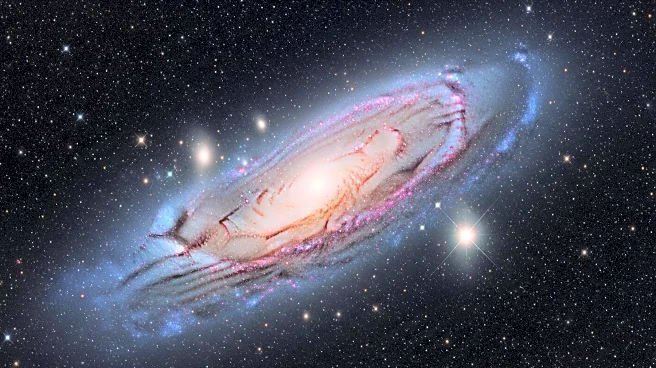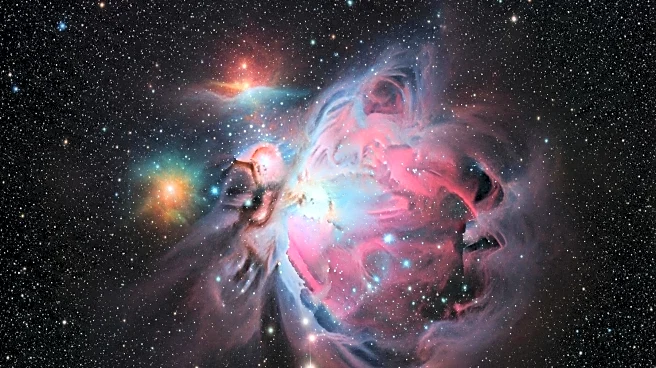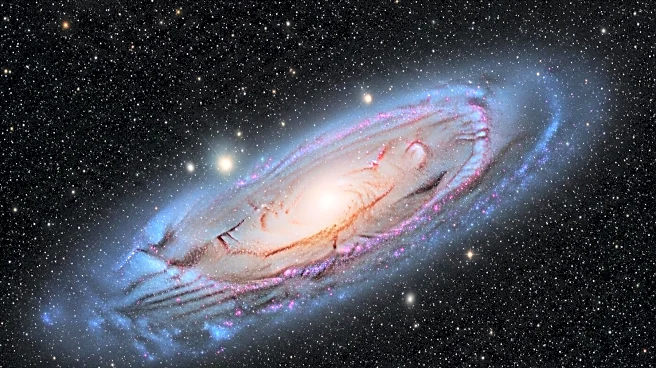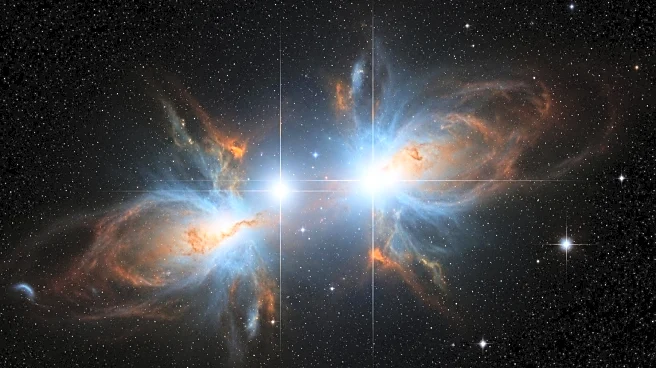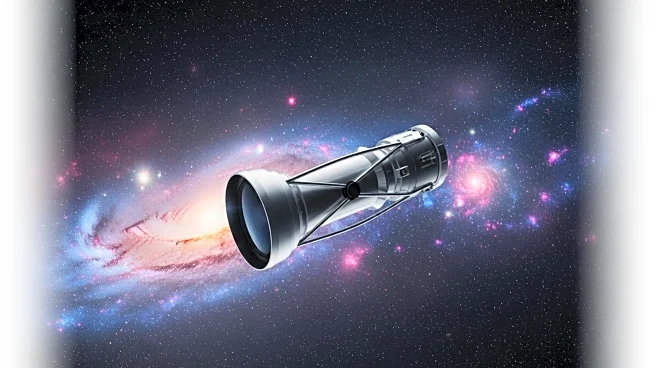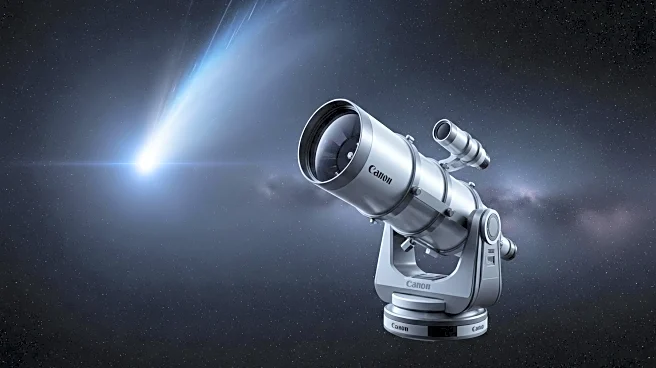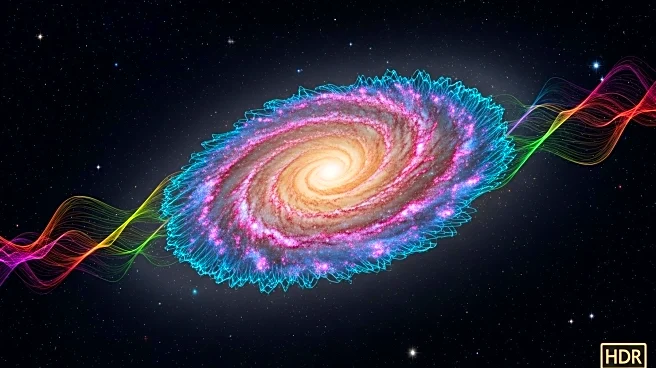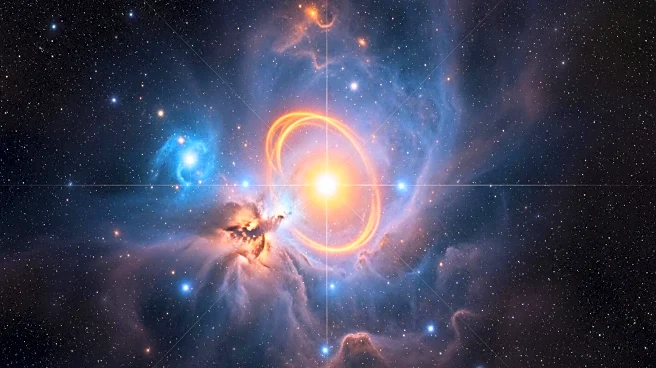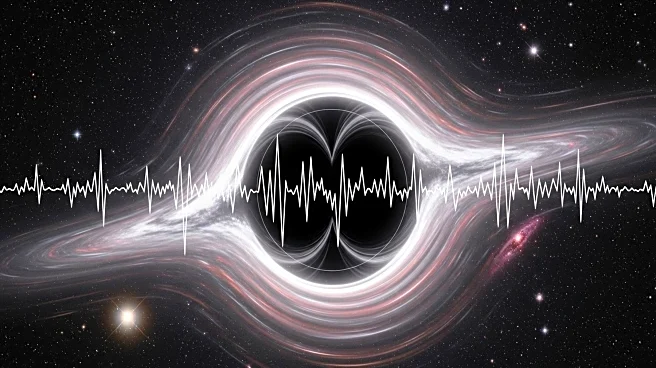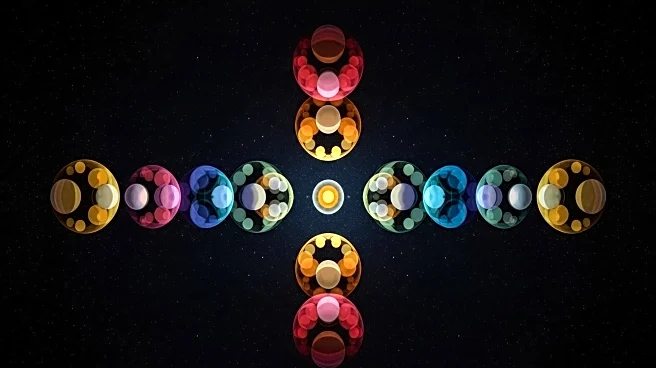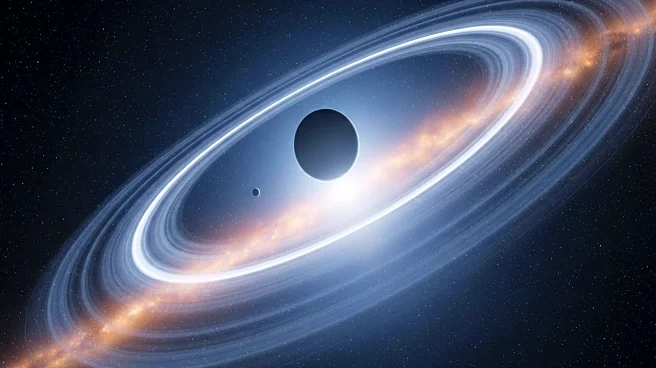What's Happening?
The Hubble Space Telescope has captured new images of the asymmetric spiral galaxy Messier 96, located 35 million light-years away in the constellation Leo. The galaxy's uneven distribution of gas and dust, asymmetric spiral arms, and off-center core are believed to be influenced by the gravitational pull of neighboring galaxies. The latest Hubble image incorporates data from ultraviolet, near infrared, and visible/optical light, revealing regions of ionized hydrogen and nitrogen. These observations help astronomers understand the environment within the galaxy and the conditions under which stars are forming. The image shows bubbles of pink gas surrounding hot, young stars, indicating ongoing star formation.
Why It's Important?
The study of Messier 96 provides valuable insights into the processes of star formation and the dynamics of galaxies. Understanding how stars form within giant dusty gas clouds and how they affect their environments is crucial for astrophysics. The data obtained from Hubble's observations can help determine whether Messier 96 is a starburst galaxy or has an active galactic nucleus, contributing to broader knowledge about galaxy evolution. This research also aids in understanding how dust filters starlight and the properties of gas between stars, which are essential for comprehending the lifecycle of galaxies.
What's Next?
Astronomers will continue to analyze the data from Hubble's observations to study the star formation processes in Messier 96 and other galaxies. Future research may focus on comparing the star formation rates and environmental conditions in different galaxies to identify patterns and anomalies. The findings could lead to new theories about galaxy formation and evolution, potentially influencing the direction of future space missions and telescope designs.
Beyond the Headlines
The exploration of star formation in galaxies like Messier 96 highlights the importance of technological advancements in space observation. The ability to capture detailed images across various wavelengths allows scientists to uncover hidden aspects of the universe. This research underscores the significance of international cooperation in space exploration and the continuous pursuit of knowledge about the cosmos.
